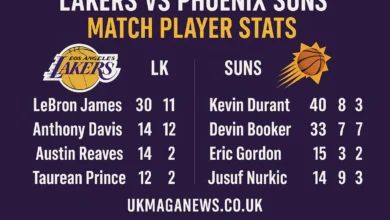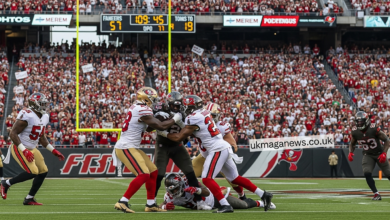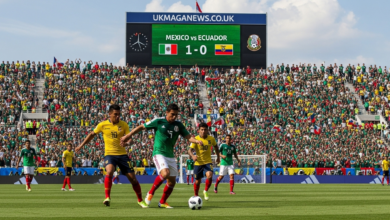Blue Jays vs Dodgers: Epic Showdown Between Baseball Giants
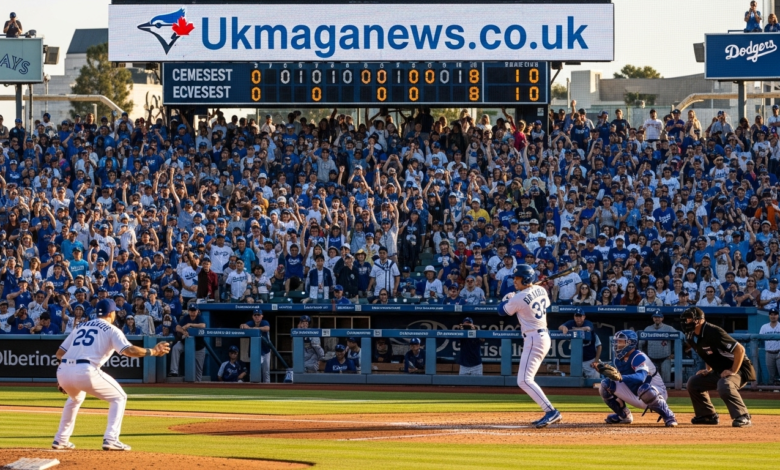
Introduction
You’re settling into your seat, ready to watch one of baseball’s most exciting matchups. The Blue Jays vs Dodgers games always deliver something special. These two franchises represent different leagues, different cities, and different baseball traditions, yet when they meet, magic happens on the diamond.
Whether you’re a die-hard fan of Toronto’s blue birds or you bleed Dodger blue, these interleague showdowns offer everything you want in baseball. Power hitting meets strategic pitching. Speed collides with precision. Young stars face off against seasoned veterans. Every pitch matters, every at-bat carries weight, and every game could swing either way.
This comprehensive guide explores everything about Blue Jays vs Dodgers matchups. You’ll discover historical context, key player comparisons, tactical approaches, and what makes these games so compelling. We’ll break down recent performances, examine head-to-head statistics, and preview what future matchups might bring. Whether you’re planning to watch the next game or just love great baseball analysis, you’re in the right place.
Historical Context of Blue Jays vs Dodgers
The Blue Jays and Dodgers come from different baseball worlds. Toronto joined the American League in 1977 as an expansion team. The Dodgers have been around since 1884, originally in Brooklyn before moving to Los Angeles in 1958. This difference in history creates interesting dynamics when they face each other.
Interleague play started in 1997, opening opportunities for these teams to meet during regular season games. Before that, they could only face each other in the World Series. The limited meetings make each game feel more special than typical divisional rivalries.
Both franchises have experienced championship glory. The Blue Jays won back-to-back World Series titles in 1992 and 1993. The Dodgers have seven World Series championships, most recently in 2020. This winning pedigree means both teams know what it takes to compete at the highest level.
The geographical distance between Toronto and Los Angeles adds to the uniqueness of these matchups. Fans from opposite ends of the continent get to see their teams clash. The three-hour time difference even affects game scheduling and viewership patterns.
When these teams meet, it’s not about division standings or playoff positioning in the traditional sense. It’s about pride, performance, and proving which league plays better baseball. These games carry a different energy than routine division matchups.
Key Players to Watch
The Blue Jays roster features some of the most exciting young talent in baseball. Vladimir Guerrero Jr. stands out as one of the game’s premier power hitters. His ability to drive the ball to all fields makes him dangerous in any count. Watching him face Dodgers pitching is always appointment viewing.
Bo Bichette brings speed and contact hitting to Toronto’s lineup. His aggressive approach at the plate creates action and puts pressure on defenses. When he gets on base, the entire dynamic of the inning changes. His energy is contagious throughout the lineup.
George Springer adds veteran leadership and postseason experience. He knows what big moments feel like and doesn’t shrink under pressure. His presence in the lineup makes everyone around him better. Pitchers can’t focus solely on one or two threats when Springer is in the mix.
The Dodgers counter with their own collection of stars. Mookie Betts exemplifies five-tool excellence. He hits for average and power, runs the bases intelligently, plays excellent defense, and has a strong arm. There’s literally nothing he can’t do on a baseball field.
Freddie Freeman brings consistent production and clutch hitting. His left-handed swing seems designed specifically for Dodger Stadium. He makes consistent hard contact and rarely chases pitches outside the zone. Pitching to him requires perfect execution.
Will Smith provides power from the catching position, a valuable combination. He’s improved defensively while maintaining his offensive production. Having a catcher who can change games with his bat gives the Dodgers a significant advantage.
Pitching Matchups and Strategies
Blue Jays vs Dodgers games often feature fascinating pitching matchups. Toronto’s rotation includes power arms who can reach the upper 90s with their fastballs. They rely on velocity and swing-and-miss stuff to dominate hitters. This approach creates strikeouts but can also lead to walks and high pitch counts.
The Dodgers typically employ a more diverse pitching strategy. They mix velocity with breaking balls and changeups. Their pitchers focus on commanding the strike zone and inducing weak contact. This philosophical difference creates interesting contrasts during games.
Bullpen management becomes crucial in these matchups. Both teams have invested heavily in relief pitching. Late-game situations can turn into chess matches between managers. Who gets the matchup advantage often determines the outcome.
The Dodgers have mastered the opener and bulk reliever strategy. They’re not afraid to use their bullpen aggressively, even in the early innings. This flexibility keeps opposing hitters off balance. Traditional starting pitcher roles matter less to them than getting outs.
Toronto tends toward more traditional pitching usage but has shown adaptability. They’ll ride a hot starter deep into games but won’t hesitate to make changes when necessary. The key is reading situations correctly and trusting your relievers.
Pitch selection against specific hitters becomes a game within the game. Does the pitcher challenge power hitters with fastballs or try to get them to chase breaking balls? These micro-decisions accumulate throughout nine innings and ultimately determine winners and losers.
Offensive Approaches and Tendencies
The Blue Jays offense is built around power. They lead the league in home runs most seasons and aren’t afraid to swing for the fences. This all-or-nothing approach creates excitement but can also result in high strikeout totals. When they connect, balls fly out of the park.
Their lineup features multiple players capable of 30-plus home run seasons. This depth means pitchers can’t pitch around anyone. Every spot in the order presents a threat. One mistake pitch can instantly change the game’s complexion.
The Dodgers take a more balanced offensive approach. They hit for power but also focus on getting on base and manufacturing runs. Their players work counts, take walks, and put pressure on defenses with baserunning. This versatility makes them difficult to defend.
Situational hitting matters more to the Dodgers than pure power numbers. They execute hit-and-runs, sacrifice bunts, and other small-ball tactics when appropriate. This complete offensive toolkit gives them multiple ways to score runs.
The Blue Jays vs Dodgers contrast creates compelling viewing. Will Toronto’s power overwhelm Los Angeles pitching? Can the Dodgers chip away with strategic offense? These competing philosophies play out over nine innings.
Home field advantage affects these approaches too. Rogers Centre’s dimensions favor power hitters. Dodger Stadium’s pitcher-friendly confines reward contact and speed. Teams must adjust their tactics based on venue.
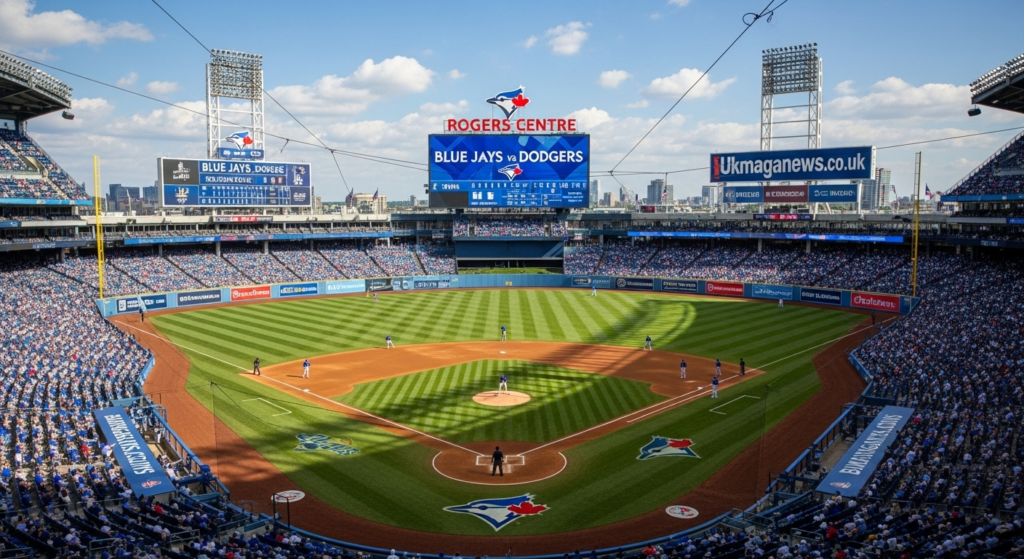
Defensive Excellence and Positioning
Defense can determine Blue Jays vs Dodgers outcomes as much as offense. Both teams prioritize defensive metrics and positioning. Modern analytics have revolutionized how teams position fielders, and these franchises embrace data-driven strategies.
The Dodgers are renowned for their defensive shifts and positioning. They study hitter tendencies meticulously and place defenders accordingly. This attention to detail turns potential hits into outs. Their infielders seem to be in the right place at the right time consistently.
Their outfield defense ranks among baseball’s best. Having Mookie Betts in right field shuts down a large portion of the field. His range, instincts, and arm strength prevent extra bases and save runs. Defense truly becomes offense when you have elite outfielders.
The Blue Jays have improved their defense significantly in recent years. They’ve added athletic players who can cover ground and make plays. While not yet at the Dodgers’ elite level, they’re competitive and getting better.
Catcher defense and game-calling impact pitching performance dramatically. Both teams employ intelligent catchers who frame pitches well and manage pitching staffs effectively. These behind-the-scenes contributions don’t show up in box scores but matter enormously.
Double plays can change momentum instantly. Both teams turn two efficiently, ending threats before they develop. The middle infield combinations practice these situations constantly. Smooth execution in clutch moments often separates winners from losers.
Managerial Decisions and Game Management
The managers’ roles in Blue Jays vs Dodgers games extend far beyond filling out lineup cards. Dave Roberts of the Dodgers has championship experience and a willingness to make unconventional moves. He trusts his instincts and doesn’t manage scared.
Roberts gained fame (or infamy, depending on your perspective) for his aggressive bullpen management. He’ll pull starters early if matchups favor relievers. This approach maximizes his roster’s strengths but sometimes backfires. The key is having the courage to make tough calls.
The Blue Jays’ managerial approach emphasizes preparation and adaptability. Their skipper studies opponents thoroughly and adjusts game plans accordingly. He empowers players while maintaining strategic control. This balance keeps the team competitive in various situations.
In-game adjustments separate good managers from great ones. Recognizing when your initial strategy isn’t working requires humility and decisiveness. Both teams’ managers have shown the ability to pivot mid-game when circumstances change.
Lineup construction matters more than casual fans realize. Where you bat your best hitters, how you balance lefty-righty matchups, and who you use as pinch hitters all impact scoring opportunities. These decisions ripple throughout the game.
Challenge usage and umpire management have become crucial skills. Knowing when to challenge calls and how to communicate with umpires without getting ejected requires finesse. Managers protect their players while maintaining working relationships with officials.
Recent Performance and Trends
Analyzing recent Blue Jays vs Dodgers matchups reveals interesting patterns. The Dodgers have generally held the advantage in head-to-head meetings over the past several seasons. Their deeper roster and consistent performance give them an edge in most situations.
However, baseball’s unpredictability means anything can happen in a short series. The Blue Jays have pulled off surprising victories when their power hitters get hot. A few well-timed home runs can overcome strategic advantages and superior depth.
Run differential tells a story about how these games typically unfold. Close, low-scoring games favor the Dodgers’ approach. High-scoring slugfests often benefit the Blue Jays’ offensive firepower. Game context matters as much as overall team quality.
Injuries impact both teams but affect them differently. The Dodgers’ organizational depth allows them to absorb injuries better than most teams. The Blue Jays are building similar depth but don’t quite match Los Angeles yet. Health heading into these matchups becomes a significant factor.
Weather conditions at Rogers Centre are controlled by the retractable roof. This consistency helps both teams, though it eliminates home field weather advantages. Dodger Stadium’s beautiful California weather creates nearly perfect playing conditions year-round.
Momentum heading into these series affects outcomes. Teams riding winning streaks carry confidence into tough matchups. Struggling teams face additional pressure against quality opponents. The mental game matters as much as physical skills.
The Fan Experience
Attending a Blue Jays vs Dodgers game offers unique excitement for fans. Toronto fans are passionate and knowledgeable, creating an electric atmosphere at Rogers Centre. The retractable roof allows games in any weather, ensuring comfort while maintaining outdoor baseball’s energy.
Dodger Stadium is one of baseball’s most iconic venues. The palm trees, perfect weather, and passionate fans create an unforgettable experience. Watching a game there feels like participating in baseball history. Every seat offers excellent sightlines and beautiful views.
The international element adds flavor to these matchups. Toronto represents Canada’s only MLB team, giving these games special significance north of the border. When the Blue Jays visit Los Angeles, Canadian fans living in California flock to Dodger Stadium.
Social media amplifies the fan experience during these games. Highlights spread instantly, creating conversations across both fan bases. The friendly rivalry between supporters adds entertainment value beyond the game itself. Banter and predictions fly back and forth throughout the matchup.
Television broadcasts showcase both teams’ unique characteristics. The production quality for these games is typically high, with experienced announcers providing context and analysis. You get educated about both teams even if you primarily follow one.
Merchandise sales spike around these matchups. Fans want to represent their teams, especially against quality opponents. Wearing your colors to these games becomes a point of pride. The visual contrast between blue and blue creates interesting aesthetics in the stands.
Statistical Deep Dive
The numbers behind Blue Jays vs Dodgers matchups reveal fascinating trends. Batting averages fluctuate based on pitching matchups, but power numbers often spike. Both teams feature hitters capable of changing games with one swing. Home runs per game typically exceeds league averages in these contests.
On-base percentage and slugging percentage tell important stories. The Dodgers generally excel in OBP, reflecting their patient approach. The Blue Jays often lead in slugging, showcasing their power emphasis. These competing strengths create balance over a series.
Strikeout rates differ significantly between the teams. Toronto’s power approach leads to more strikeouts but also more extra-base hits. The Dodgers put more balls in play but with less power per contact. Neither approach is inherently superior; they’re just different paths to run production.
Earned run averages can be misleading in these matchups. Strong offenses inflate ERA numbers even for quality pitchers. Looking at advanced metrics like FIP (Fielding Independent Pitching) and WHIP (Walks plus Hits per Inning Pitched) provides better pitcher evaluation.
Defensive metrics favor the Dodgers in most categories. Their defensive runs saved and ultimate zone rating numbers typically rank among baseball’s best. The Blue Jays are improving but haven’t reached that elite tier yet. These differences accumulate over full games and series.
Baserunning statistics reveal another contrast. The Dodgers steal more bases and take more extra bases on hits. The Blue Jays rely less on speed, trusting their power to drive in runs. Both strategies work when executed properly.
Impact of Venue and Travel
Rogers Centre presents unique challenges for visiting teams. The turf surface plays faster than natural grass, affecting ground balls and defensive positioning. Hitters need to adjust to the background and lighting. These subtle factors provide home field advantage.
The dimensions favor power hitters, though the ballpark isn’t a bandbox. Fly balls carry well, especially when the roof is closed and air conditioning is running. Pitchers who give up fly balls can get hurt quickly. Ground ball pitchers fare better in this environment.
Dodger Stadium’s pitcher-friendly reputation is well-earned. The marine layer often keeps balls in the park that would be home runs elsewhere. The deep outfield dimensions require power to clear the fences. This environment rewards pitchers who induce fly balls.
Travel logistics affect team performance subtly but significantly. The cross-continent trips involve long flights and time zone changes. West coast teams traveling east often struggle with early game times. East coast teams going west face late starts relative to their body clocks.
The Dodgers have more experience with these travel challenges than the Blue Jays. They regularly play teams across North America and have refined their travel routines. Experience managing these factors provides small but real advantages.
Altitude doesn’t factor into these matchups since both cities are near sea level. However, the climate difference is dramatic. Toronto’s weather varies wildly throughout the season, while Los Angeles enjoys consistent conditions. This variability affects player comfort and performance.
Future Outlook and Expectations
Both organizations have built sustainable winning models. The Blue Jays are entering their competitive window with young stars under team control. Their lineup should remain elite for several years. Continued pitching development will determine championship viability.
The Dodgers show no signs of stepping back from excellence. Their combination of player development, strategic signings, and financial resources creates consistent contention. They reload rather than rebuild, maintaining high standards year after year.
Future Blue Jays vs Dodgers matchups should remain compelling. As Toronto’s young core matures, the talent gap narrows. Close series become more likely, increasing drama and entertainment value. These games could preview potential World Series matchups.
The players mentioned earlier form the foundation, but new stars will emerge. Baseball’s constant evolution means today’s prospects become tomorrow’s superstars. Following both teams’ farm systems provides clues about future roster construction.
Rule changes in baseball affect these teams differently. Pitch clocks favor prepared teams like the Dodgers. Defensive shift restrictions might help power-oriented teams like the Blue Jays. Adapting to new rules becomes part of sustained success.
International talent pipelines benefit both organizations. The Blue Jays have strong Canadian connections and global scouting. The Dodgers excel at international signings and development. This global approach ensures continuous talent influx.
What Makes These Games Special
Blue Jays vs Dodgers matchups transcend typical regular season games. The contrast in team philosophies, the star power on display, and the passionate fan bases create must-watch television. You’re seeing different baseball ideologies clash on the field.
The interleague element maintains novelty value even decades after its introduction. These teams don’t play often enough for the matchup to become routine. Each series feels fresh and important, carrying playoff-like intensity.
National and international attention focuses on these games. Media coverage increases, bringing casual fans into the conversation. Social media engagement spikes, creating broader cultural moments beyond hardcore baseball fans.
Individual matchups within the game provide endless storylines. Elite hitters facing elite pitchers, defensive wizards making spectacular plays, strategic battles between managers—all these elements combine into compelling entertainment.
The respect between organizations adds depth to the rivalry. There’s no animosity or bad blood, just mutual recognition of excellence. This professional respect creates healthy competition focused on performance rather than personal conflicts.
Young fans watching these games see baseball at its best. The talent level, strategic complexity, and competitive balance showcase what makes baseball beautiful. These matchups inspire the next generation of players and fans.
Conclusion
The Blue Jays vs Dodgers rivalry represents everything great about baseball. Two excellent organizations with different approaches competing at the highest level creates drama and excitement. Whether you favor Toronto’s power approach or Los Angeles’ strategic versatility, these games deliver entertainment.
Understanding the contrasts between these teams enriches your viewing experience. You’re not just watching baseball; you’re witnessing different philosophies compete in real time. The tension between power and precision, youth and experience, creates compelling narratives.
Future matchups promise continued excellence from both sides. As rosters evolve and new stars emerge, the quality should remain consistently high. These games will continue deserving your attention and providing memorable moments.
Which approach do you prefer watching? Does the Blue Jays’ power game excite you more, or do you appreciate the Dodgers’ complete team approach? Share your thoughts with fellow fans and enjoy the next time these two teams meet on the diamond.
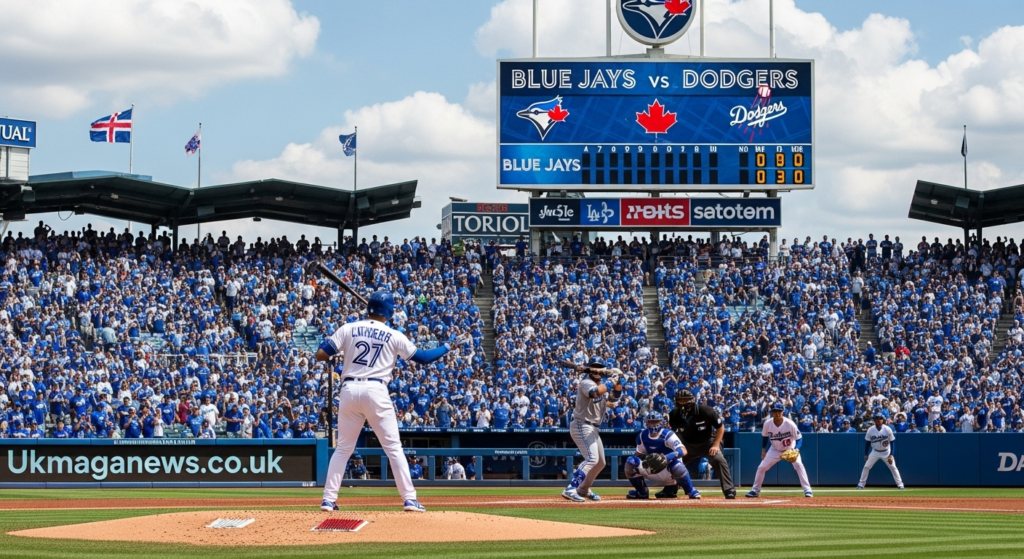
Frequently Asked Questions
How often do the Blue Jays and Dodgers play each other?
The Blue Jays vs Dodgers matchups occur infrequently during the regular season, typically once every three years as part of interleague rotation. When they do meet, it’s usually a three or four game series. The limited meetings make each game more significant than routine divisional matchups.
Have the Blue Jays and Dodgers ever met in the World Series?
No, the Blue Jays and Dodgers have never faced each other in the World Series. This is because they play in different leagues (American and National), so they could only meet in the Fall Classic. Both teams have won championships, but their title runs haven’t overlapped in the same year.
Which team has the better head-to-head record?
The Dodgers generally hold the advantage in recent head-to-head meetings against the Blue Jays. However, the sample size is relatively small due to infrequent meetings. Individual series outcomes vary based on roster health, timing, and performance. Past records don’t necessarily predict future results in these matchups.
Where can I watch Blue Jays vs Dodgers games?
Games are typically broadcast on each team’s regional sports networks. National broadcasts occasionally pick up these matchups for wider audiences. MLB.TV offers streaming options for out-of-market fans. Check your local listings and streaming services for specific availability in your area.
Who are the key players to watch in these matchups?
For the Blue Jays, watch Vladimir Guerrero Jr., Bo Bichette, and George Springer. These offensive stars can change games quickly. For the Dodgers, Mookie Betts, Freddie Freeman, and Will Smith lead the way. The pitching matchups featuring each team’s aces also deserve close attention.
What time do these games usually start?
Start times depend on the host venue and day of the week. Games in Toronto typically start at 7:07 PM Eastern Time. Dodger Stadium games often begin at 7:10 PM Pacific Time, which is 10:10 PM Eastern. Weekend day games occur occasionally with earlier start times.
Are tickets expensive for Blue Jays vs Dodgers games?
Ticket prices vary based on venue, seating location, and game importance. Dodger Stadium tickets typically cost more due to market size and team popularity. Rogers Centre offers a range of price points. Premium matchups against quality opponents like these usually command higher prices than average games.
How do weather conditions affect these games?
Rogers Centre’s retractable roof eliminates weather concerns in Toronto. Games can proceed in any conditions with the roof closed. Dodger Stadium rarely experiences weather issues due to Southern California’s mild climate. Rain delays are uncommon for both venues compared to other ballparks.
What’s the rivalry like between the fan bases?
The Blue Jays vs Dodgers relationship is more friendly competition than bitter rivalry. Fans respect both organizations’ excellence. There’s no historical animosity or controversial incidents fueling negativity. The competitive spirit remains positive, focused on baseball performance rather than personal animosity.
Can these teams meet in the playoffs?
Yes, the Blue Jays and Dodgers could potentially meet in the World Series if both teams advance through their respective league playoffs. This would create an exciting championship matchup between two talented teams. However, both must first navigate their own league’s playoff bracket to reach the Fall Classic.
Also Read Ukmaganews.co.uk
